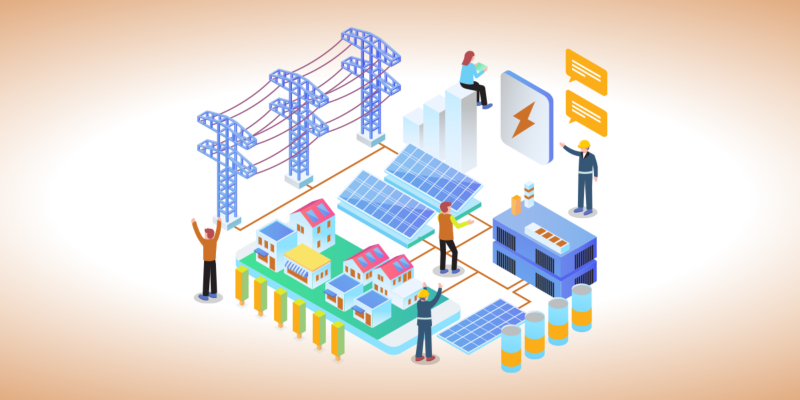Mid-Year Trends Update: Virtual Power Plants

The move to a decentralized grid has spurred growing interest in utility and third-party control of virtual power plants (VPPs). At first glance, this term could easily be dismissed as yet another attempt to attach a new label to something that has been done for years. However, what sets VPPs apart from previous programs is that it incorporates key elements of traditional demand response with various types of resources, including distributed generation units, batteries and controllable end-use devices, such as water-heater controllers, smart thermostats and electric vehicle (EV) chargers.
There are other noteworthy differences. VPPs can be dispatched to meet local grid needs or sold as resources to the wholesale power market. VPPs offer greater flexibility and use cases than traditional demand-response programs. A VPP can address a variety of needs, including peak load reduction, voltage regulation, local grid stability or revenue generation. The VPP components could be owned by individual consumers, independent power producers and/or commercial and industrial accounts. These components can be mixed and matched to achieve the necessary outcome and dispatched and/or controlled by the local utility or third party.
VPPs could utilize any mix of the following technologies:
- Rooftop solar.
- Behind-the-meter energy storage.
- Smart thermostats and HVAC equipment.
- EVs and EV chargers.
- Smart appliances.
In addition to having the appropriate mix of resources, VPPs require a control system for the operator. For many utilities, this control system will include the distributed energy resource (DER) management system.
- An electric cooperative can use a VPP to improve the management and optimization of DERs located within its service territory. The cooperative, or its members, can own the DERs. Here are a few ways that a cooperative might use a VPP:
- Aggregation of DERs: A VPP allows a cooperative to aggregate and coordinate the output of DERs located on its system. Solar panels, wind turbines and battery storage systems can be coordinated to function as a single, centralized power plant. This enables the system to better manage and optimize the use of these resources to help ensure grid reliability.
- Grid integration: The VPP can monitor the grid and adjust the output of the DERs to match the changing demand for power. For example, EV chargers can receive a signal to charge or water heaters can be activated during periods of excess generation at the local feeder level. This can help to improve the stability of the grid and reduce the need for expensive grid upgrades. Advanced software controls are critical for this use case. Pilots and further understanding of the cost and benefits are still needed.
- Ancillary services: A VPP can be used to provide ancillary services to the grid, such as frequency regulation and voltage support. This can help reduce costs for the cooperative and its members and provide additional revenue streams for the cooperative and/or DER owners.
- Demand response: A VPP could manage demand from the cooperative’s members. In many ways these are the traditional demand-response programs that cooperatives have operated for years.
- Member engagement: A VPP could be used to engage members in its energy management, helping members and the cooperative realize cost savings. For example, the VPP can provide members with information about their energy usage and allow them to participate in utility programs designed to meet the changing needs of the grid.
A key difference between the VPP and past demand-response programs is frequency of use. Traditional demand-response and curtailment programs are used sparingly. Many utilities use demand response on peak power days or use the program during grid emergencies to prevent larger disruptions.
Interest in VPPs is expected to continue to grow as more residential and commercial customers install DERs and smart devices, traditional baseload generation is retired, extreme weather events continue to impact grid operations and non-utility providers see an opportunity to enter new businesses.